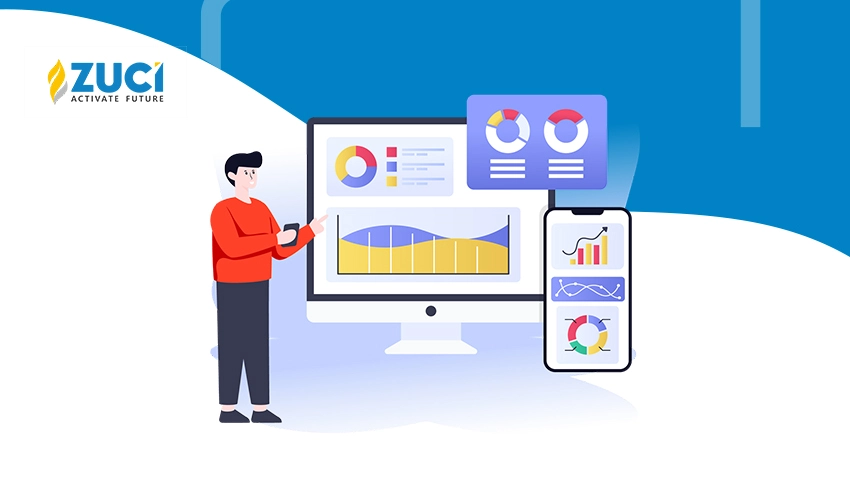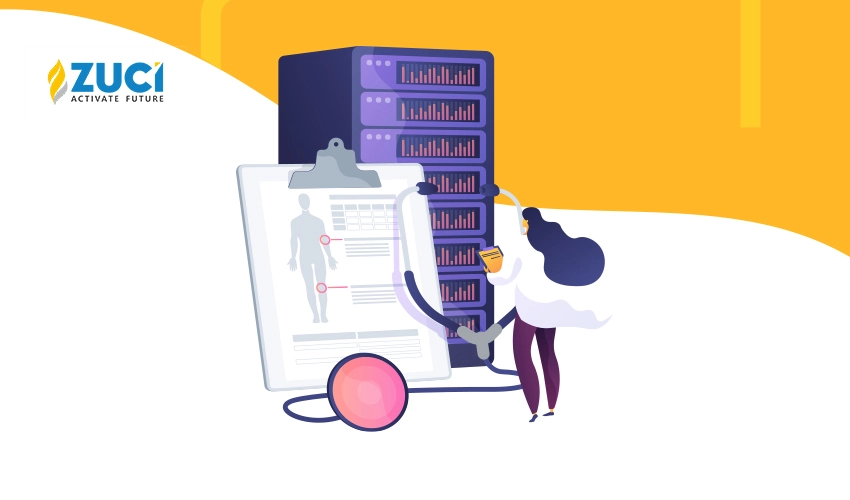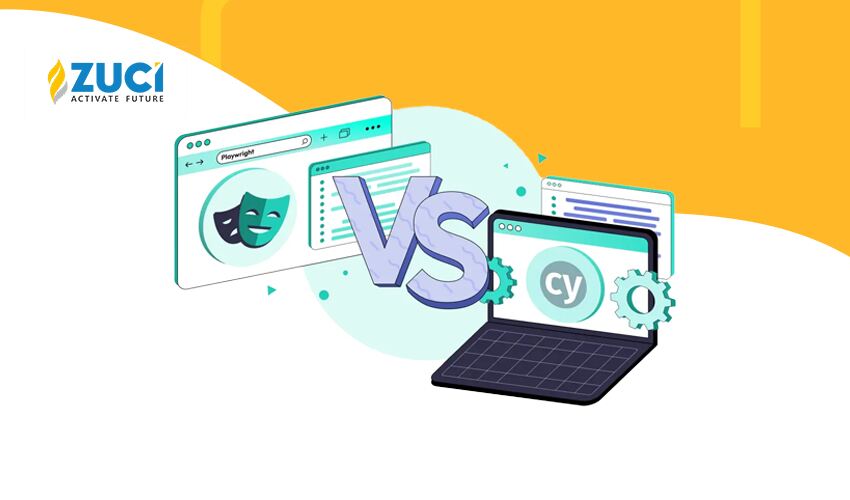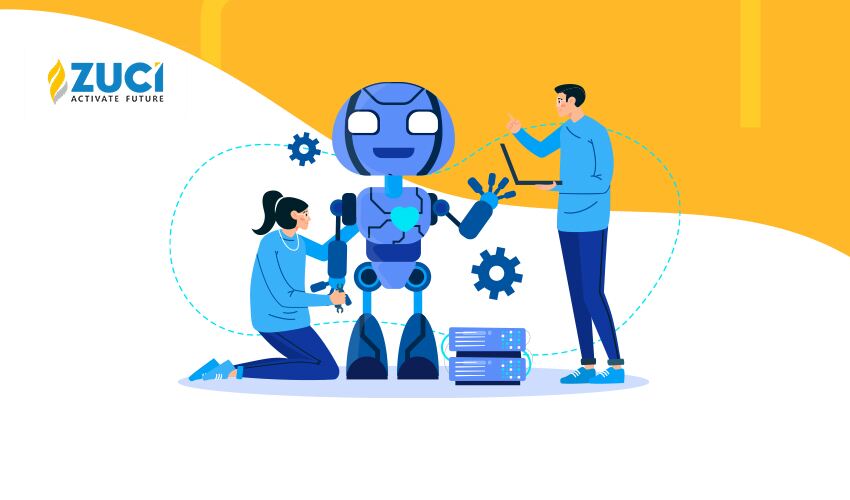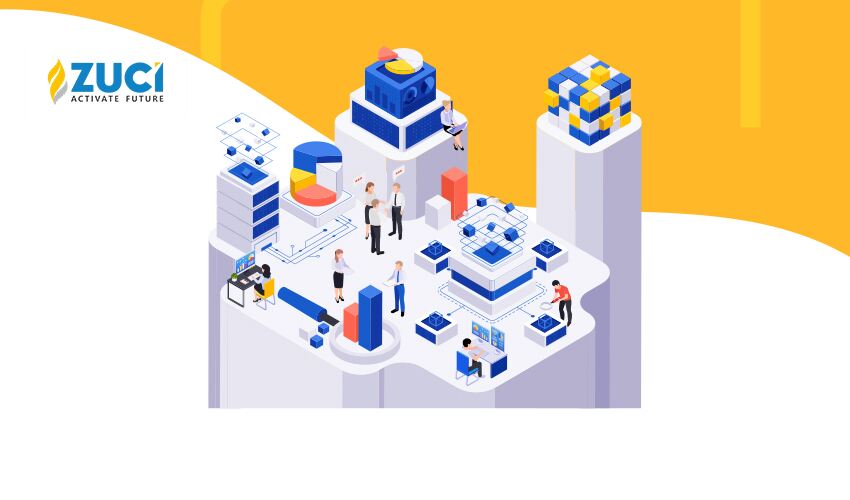Reading Time : 1 Mins
Top 10 Digital Transformation Trends for 2024
Loves getting creative with mundane topics in addition to geeking out over books and movies.
The Covid-19 pandemic has changed the way we do business, thanks to some technologies that enabled work-from-home scenarios. Can you imagine what would have happened if not for technology? The world would have come to a halt.
While many of the changes are likely to continue, we will see even more technologies popping up every day. Richard Branson and Jeff Bezos even traveled to space! Well, so did William Shatner. That’s exactly why there is so much excitement about what 2024 holds for us.
In this article, we are going to look at the top 10 digital transformation trends for 2024.
1. Business Process Automation:
Automation will no longer be exclusive for enterprises, as there are a lot of accessible solutions which have hit the market. Business Process Automation is one of the most talked-about digital transformation trends and it is a must-have for businesses in 2023. Automating business processes can be done in a variety of areas, such as marketing, customer support, sales, accounting, finance, manufacturing, supply chain, etc. Going forward ML and AI will help businesses use their enterprise data effectively.
According to Gartner, more than 77% of businesses regularly use automation, application development, and AI tools in their day-to-day operations. Artificial intelligence has the ability to automate tasks that are not only monotonous but also high risk.
2. 5G:
They are the next stage of mobile communications. The 5G network is going to give us incredible speeds, and it is said that it will take only one millisecond to respond to commands. On the other hand, 4G used to take up to 200 milliseconds. Every online business that is dependent on the Internet of Things will hugely benefit when 5G becomes mainstream. Businesses will see faster broadband speeds, stable mobile networks, and a more connected future with 5G. The technology will offer greater reliability, better security, wider installation and higher bandwidth
3. Low-code tools will become mainstream:
Many enterprises will see a bigger shift towards no-code or low-code software in the year 2023. While there was a lot of fear that developers would lose their jobs if these technologies become mainstream, it remains unfounded. These categories of tools have actually proven to be a big asset for developers and businesses around the world. Rather than spending time building tools for their day-to-day operations, developers can use the extra time to work on innovative products that can provide serious business growth.
Low-code solutions also offer the chance for professionals to make smarter decisions. With an easy learning curve, low-code, and no-code solutions are great for business users who want to create modern applications for themselves or for developers to automate manual processes.
It offers improved agility, higher productivity, decreased costs, better customer experience, faster transformation, and effective risk management and governance. Businesses that adopt low-code and no-code development will remove complexity from building business apps. They will be better equipped to quickly adapt and respond to changing business conditions.
4. Contactless Solutions and Digital Payments:
One of the biggest trends since the year 2020 has been contactless solutions. From restaurants to manufacturing companies, everyone has had to adopt to contactless service delivery to maintain social distancing norms. Digital payments are also a great way for businesses to avoid contact with the customer and for customers to avoid contact with high touch surfaces. Consumers and businesses around the world can now access the digital economy. Digital payments are one of the biggest enablers for the digital shift of banks. Research by RTi says that 30% of the respondents used contactless payment methods for the first time after Covid-19 started.

5. Hybrid work:
One of the most common digital transformation trends in 2024 is going to be a hybrid work environment since companies expect their employees to work from the office at least a few days a month. The workplaces of today are evolving because of COVID-19-powered lockdowns. The future of work is predicted to be heavily connected- much more than now. Companies have been forced to adapt and deliver digitally connected experiences to grow productivity, increase retention rate and promote their well being.
There is an increased focus on work-life balance these days since many employees are still working from home or have a hybrid work situation where they work from home and the office as well. Organizations will have to deliver a digital-first and connected experience to ensure that their employees give their best. A hybrid work model also provides a lot of flexibility for the employees to get work done at their own pace.
According to Accenture’s recent report ‘The Future of Work: A Hybrid Work Model,’ 83% of employees prefer to contribute onsite and off. Since many employees have grown accustomed to working from home for the past two years, it makes sense to give them that level of flexibility.
6. Democratization of AI:
AI is one of the most important digital transformations in 2023 and you will see more of its adoption. Democratizing AI is all about making it accessible to every business and person within the organization. It uses AI tools that spot and recognizes trends, predicts, makes decisions, learns and improves. It can be incorporated into startups, SMBs and enterprises
This trend is being driven by companies which have heavily invested in artificial intelligence, which includes Amazon, Facebook, Microsoft, IBM, and Google so that there is wider adoption and access. Earlier, AI development required a lot of resources including hiring subject matter experts, computing power and money.
AI democratization will facilitate development by offering user-friendly resources, pre-built algorithms, highly intuitive interfaces, and cloud computing platforms. Developers who have access to these tools will be able to create their own machine learning applications and other complex software.
Also Read – Artificial Intelligence (AI) Trends that Will Be Huge in 2022 and Beyond
7. Digital Banking:
The new-age technologies such as artificial intelligence, machine learning, the Internet of Things, robotic process automation, and blockchain are going to make incredible changes in the banking landscape. Most banking services are available online these days. There was a time when getting your loan approved used to take weeks. But today, you get to know the status of your loan application within seconds.
The number of people who use online banking services is expected to reach 2.5 billion by 2024. Here are a few functions banks implemented due to COVID-19, according to Deloitte’s Digital Banking Maturity report.
- 18% of banks launched contactless payment methods
- 41% of banks increased the limit of contactless payments
- 34% of banks implemented fully digital processes
- 25% of banks introduced appointment bookings in branches
- 23% of banks introduced digital ID&V methods
Several financial institutions have also started offering loans and credit cards online. Even the document verification process is being done online. The shift to digital banking started much before the pandemic. The pandemic provided financial institutions with an opportunity to rethink the way they operate and make digital banking, more personal, understanding and empathetic.

8. Environmental Social Governance (ESG) will hit headlines often:
The ESG criteria are a set of standards for a business’s operations that socially conscious investors will use to measure potential investments. The governance factor in ESG refers to the company’s leadership audits, internal controls, shareholder rights and executive pay. It can significantly impact the financial metrics of a company.
From climate issues to diversity, organizations across the world are prioritizing ESG, and you will likely hear more about it in 2023 and beyond. There has been a lot of investments and pledges in areas like sustainable product development, climate, diversity and equity.
9. Multi-cloud architecture:
The reason behind setting up a multi-cloud environment is that a single hosting provider cannot provide all the solutions to problems that businesses may face online. It is exactly why software and workloads within an organization are used in one or two private or public clouds. The COVID-19 pandemic has also created the need to embrace multi-cloud architecture to reduce business continuity risks. It helps businesses manage the working model with ease and allows for remote work. A multi-cloud strategy is employed for a variety of reasons, including disaster recovery, resilience, security, and data residency requirements.
One of the biggest challenges when it comes to setting up a multi-cloud architecture is the complexity of infrastructure management. To manage a number of cloud environments, businesses will have to search for automation and cloud management solutions. It will help them meet the agility requirements and experiment with new delivery models. It is a Smart Investing Strategy for businesses of all sizes, not only enterprise-level organizations. Multi-cloud adoption helps businesses achieve greater efficiencies, leverage economies of scale and build a strong virtual infrastructure.
10. Big Tech will face intense scrutiny from regulators:
Some of the biggest tech companies in the world will face intense scrutiny from regulators and government bodies. Court rulings and antitrust legislations have been regular affairs with these companies because of their monopolistic practices. Apple, Google, Facebook and Amazon are some of the companies under constant scrutiny. It is expected that these antitrust rulings will force them to make changes to their platforms, behaviors and how they use customer data. Recently, Apple’s US market dominance led to a ruling which will at least force them to change how users are able to download apps.
Conclusion:
The year 2024 will be witness to tectonic shifts in digital transformation. Businesses that seek to thrive in their niches will have to embrace a digital-first mindset, otherwise, they are bound to struggle. No matter what industry you are in, digital tools and the right set of technologies is going to be the backbone of your success. The consequences of the changes that you make will be immense.
If you are looking to engage in digital transformation for your organization, let us help you achieve those goals for you. Get in touch with the experts at Zuci.
Related Posts


